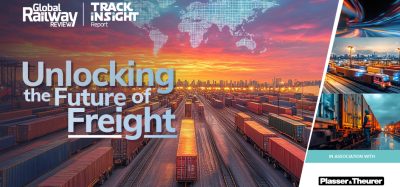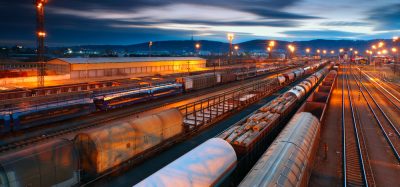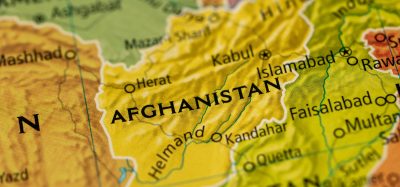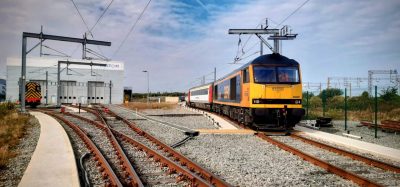The value of rail freight
Posted: 10 December 2010 | | No comments yet
An effective way of transporting goods across the country is by rail freight, and this is vital to Britain’s economy. Not only does it provide a faster, greener, safer and more efficient way of transporting heavy loads than roads, it is responsible for moving over 100 million tonnes of goods hundreds of miles every year – providing the backbone to power Britain’s economy.
An effective way of transporting goods across the country is by rail freight, and this is vital to Britain’s economy. Not only does it provide a faster, greener, safer and more efficient way of transporting heavy loads than roads, it is responsible for moving over 100 million tonnes of goods hundreds of miles every year – providing the backbone to power Britain’s economy.
An effective way of transporting goods across the country is by rail freight, and this is vital to Britain’s economy. Not only does it provide a faster, greener, safer and more efficient way of transporting heavy loads than roads, it is responsible for moving over 100 million tonnes of goods hundreds of miles every year – providing the backbone to power Britain’s economy.
The movement of freight is vital to British prosperity. Whether it is raw materials for manufacturing, fuel for electricity generation or the transport of consumer goods, the population of Britain relies on rail freight to maintain living standards and drive economic prosperity.
Rail freight is an indispensable part of the British economy, carrying an estimated £30 billion worth of goods. Supermarkets rely on rail freight for the delivery of groceries; power stations rely on coal deliveries; while rail freight helps to remove waste from our cities cleanly and efficiently. It is an indispensable part of our everyday lives, a success story, but one that has been largely untold until now.
It is currently estimated that rail freight contributes £870 million to the nation’s economy, yet data from the Office of National Statistics suggests that the rail freight industry is supporting an economic output of six times its direct turnover.
A further measure of the industry’s contribution to the UK economy is its added value which is estimated to contribute £299 million in profits and wages. These are impressive figures in light of the fact that rail freight only now accounts for 11% of the freight surface transport market. Yet the wider benefits that rail freight brings to the economy and society deserve recognition in securing its fair share of capacity and investment in the network.
Rail freight has come a long way over the last decade, but more investment is needed if we are to accommodate expected demand. We predict demand in the UK will continue to grow by at least 30% over the next decade – the equivalent of 240 additional freight trains a day – and by as much as 140% over the next 30 years. These figures are testament to the efforts being made across the industry to provide a service businesses want to use – a service that is reliable and flexible and meets business needs.
Traditionally, rail freight has a long association with the transport of heavy, bulky goods and construction materials. London alone receives 40% of its raw materials by rail, while major construction schemes are able to meet their timescales and keep costs down because of the reliability of rail. It continues to be extremely important for these markets but the role of rail freight today is much broader.
Following a decline in primary and manufacturing industries, rail freight has had to adapt as its traditional role in transporting bulk materials has shifted, revealing its potential to move consumer goods efficiently and serve the burgeoning global trade in these markets.
The rail freight industry has proved it can adapt, offering an efficient and flexible service for retailers to get their goods to market quickly and at an affordable cost. It is no accident that rail has already made strong in-roads into these markets in recent years.
Rail offers many advantages over road haulage. It provides a disciplined network in terms of planning and management with sophisticated timetabling and systems designed to optimise reliability. More than eight out of every ten freight trains complete their journey on time and, for premium delivery goods trains such as the Stobart services for Tesco, punctuality is at 98%.
With track access prices at the lowest they have been since the railways were privatised in the mid-90s, rail performance at an all time high and with businesses clamouring for greener solutions, it is likely that more companies will follow suit and embrace the benefits of rail freight.
Retailers are increasingly relying on rail to move more of their goods across the country, attracted by the reliability and competitive pricing rail has to offer. We are already attracting major household names like Tesco and ASDA – businesses which demand the highest levels of reliability and cost efficiency in order to get their goods to consumers in a highly competitive market.
This isn’t just a case of delivering goods reliably, but rail provides versatility and scale road haulers simply cannot offer. The advent of temperature controlled services from southern Europe, which are achieving up to a day’s quicker journey time than road haulage, is a demonstration of rail’s strength in this regard. The wide range of goods moved by rail includes Royal Mail letters and parcels, mineral water, with some bottles transported all the way from Lake Geneva to the Midlands by rail, wine and Scottish whisky, and fresh fruit direct from Spain.
Rail freight also contributes to the British export market delivering cars such as Minis, Land Rovers and Jaguars to ports so that they can be shipped abroad. The use of rail helps enable the secure safe delivery of these prestige goods. Jaguar operates railheads at both its Halewood and Castle Bromwich plants enabling more than 70% of its production to travel by rail, saving and estimated 4.5 million lorry miles a year.
Jaguar also credits rail with improving distribution efficiency as it allows the company to avoid the disruption associated with road congestion. Twenty-two cars can be transported in each rail wagon meaning that 176 cars can be carried on a typical eight wagon train. This same load would require 22 lorry transporters.
Cars for export to Europe are carried to Port Dagenham for transfer onto ships. Cars destined for further afield are transported by rail to Southampton from where they continue their journey to markets in Asia, America and the Middle East. The unique role of rail freight in a number of instances means rail provides solutions not practical by road.
We are also seeing more success from deep sea container traffic as rail continues to grow from ports all around the country as well the major container ports of Southampton and Felixstowe, shipping in goods from around the world. Rail now has a 25% market share in container traffic from these major ports, a figure that will rise further as the network is enhanced to accommodate the increasingly popular 9’6” ‘high cube’ container. Freight operators are increasingly using high-cube containers to carry goods. Current usage stands at 40% and is set to increase to between 50% and 70% by 2019.
Significant investment is being made to improve freight links between our ports and towns and cities across the country to accommodate these larger containers. Their size means that they can only be carried on many routes on specially adapted low wagons which allow them to fit within the tighter confines of our network as such. But this solution means that fewer containers can be hauled reducing the potential number of containers per freight train by a third.
A number of different schemes are being implemented to increase the gauge of key routes across the country so these containers can be hauled more easily. We are investing £71 million on the route between the Port of Southampton and the West Coast Main Line at Nuneaton to replace bridges and lower the track in tunnels to increase the potential loading gauge. This scheme is important as not only will it increase capacity on this vital strategic route but will help to relieve the heavily congested A34 arterial road, reducing the number of lorry journeys through the region by 50,000.
We are also making improvements to other routes across the country to increase capacity and capability of our rail freight operations, including enhancements to allow more freight to travel between the Suffolk port of Felixstowe, and upgrading the link between Peterborough and Doncaster via Lincoln to add extra capacity on the East Coast.
Encouraging a modal shift of freight from road to rail is good news for the country. Such rail freight enhancement schemes enable rail to offer a faster, greener, safer and more efficient way of transporting loads across Britain and is increasingly the mode of choice in a competitive freight market. If this additional demand was to be met by road freight this would lead to around a staggering extra nine million lorry journeys on Britain’s roads each year.
Rail freight can help businesses in a number of ways, and more-and-more businesses are taking advantage of the benefits rail has to offer. Not only in terms of cost, but because rail can help businesses mitigate against the unpredictable price of fuel as rail uses less fuel per tonne transported compared to the lorry. On average, a gallon (3.78L) will move a tonne of goods 395km compared to only 141km by road.
Rail freight can make a significant contribution in helping reduce carbon emission as each freight service can do the job of an estimated 60 lorries. Rail freight produces less than a tenth of the nitrogen oxide per tonne carried compared to road, while, on average, a gallon of fuel will move a tonne of goods 395km compared to only 141km by road.
Whilst the end customer will always choose the transport mode that makes economic sense there is an increasing recognition that freight by rail makes environmental sense and can be marketed in that way.
Rail freight’s CO2 emissions are 76% less than road haulage per tonne carried. When added to rail’s advantageous performance in harmful emissions such as nitrous oxide and particulates, the increased use of rail to meet sustainability objectives is now seen as a critical part of rail freight customers’ corporate and social responsibilities.
As road congestion increases and greater attention is given to the sustainable transport modes there is an increasing awareness that road freight has problems. Recent studies identified HGVs as causing 20% of the CO2 produced by our transport systems and being involved in 9% of UK road fatalities. The total tax contribution from the road freight sector was estimated to equal just 31% to 41% of its external costs upon society and the environment.
For Network Rail and the freight operating companies this is an exciting time. Our vision is to increase the modal share of rail and to take freight off Britain’s roads, improving our quality of life and substantially reducing carbon emissions.
A lot has been achieved, but there is more to do if we are to cater for the anticipated demand and challenge the dominance of road haulage. It is essential that, together with Government, we continue to put in place the right plans to allow freight to be a successful part of a vibrant, growing railway. It is important that we grow and develop the railway to make this possible.
Over the coming years, the rail industry will continue to work with passengers, business and Government to prioritise those freight schemes that deliver the greatest benefit to the economy. Whether this is increasing capacity for more trains or improving the efficiency of the network by rebuilding our infrastructure, all must provide value for money.
About the Author
Paul Plummer
Paul Plummer joined Network Rail when it took over Railtrack nearly six years ago. His responsibilities include all aspects of economic regulation, business planning and long-term planning of the network. Previously Chief Economist (from 1999-2001) and then Non-Executive Director (until October 2002) at the Office of the Rail Regulator, he has also worked at National Economic Research Associates (NERA), NM Rothschild & Sons and Accenture.
OUT NOW: The Definitive Guide to Rail’s Digital Future
The rail industry is undergoing a digital revolution, and you need to be ready. We have released our latest market report, “Track Insight: Digitalisation.”
This is not just another report; it’s your comprehensive guide to understanding and leveraging the profound technological shifts reshaping our industry. We move beyond the buzzwords to show you the tangible realities of AI, IoT, and advanced data analytics in rail.
Discover how to:
- Optimise operations and maintenance with real-time insights.
- Enhance passenger services through seamless, high-speed connectivity.
- Leverage technologies like LEO satellites to improve safety and efficiency.
Featuring expert analysis from leaders at Nomad Digital, Lucchini RS, Bentley Systems and more, this is a must-read for any rail professional.







